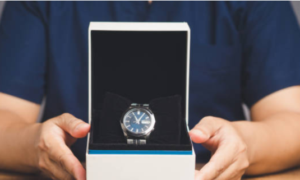The Apple Watch was first introduced by Apple Inc. on September 9, 2014, during a special event. However, it was not available for purchase until April 24, 2015. The smartwatch marked Apple’s entry into the wearable technology market, offering features such as fitness tracking, health monitoring, and integration with iOS devices and services. Since its initial release, the Apple Watch has seen several updates and iterations, enhancing its functionality and expanding its user base. Once such update includes a “crash detection” capability.
In the world of wearable technology, Apple Watch has taken a significant step forward with its crash detection feature. Crash detection on Apple Watch uses advanced sensors and algorithms to detect severe car accidents. This feature can automatically contact emergency services and share your location, potentially saving lives in critical moments.
When a severe crash is detected, the Watch displays an alert and sounds an alarm. If the user does not respond within a short window, it will automatically dial emergency services. Such proactive measures are designed to aid those who might be incapacitated and unable to call for help themselves.
This innovation is particularly beneficial for solo travelers and drivers. The peace of mind this feature provides makes the Apple Watch not just a gadget, but a lifeline integrated into everyday wear.
Overview of Crash Detection on Apple Watch
Crash Detection on Apple Watch is designed to identify car accidents promptly and notify emergency services to provide timely assistance. This feature relies on advanced sensors and algorithms to detect significant impacts accurately.
Technology Behind Crash Detection
The Apple Watch uses a combination of accelerometers, gyroscopes, and other sensors to monitor for sudden and severe impacts consistent with car accidents. The accelerometer detects rapid changes in motion, while the gyroscope measures orientation and angular velocity. When these sensors record a sudden force, the watch cross-checks several data points to confirm a crash.
Machine learning algorithms play a key role, analyzing sensor data patterns to differentiate between a crash and other high-impact events like a fall or hard bump. GPS data may also be used to track speed and direction changes, adding another layer of verification.
Activation and Operation
Crash Detection activates automatically when the Apple Watch senses a significant impact. Upon activation, the watch displays an alert, allowing the user to confirm they are safe or dismiss the alert if it was triggered accidentally. If the user does not respond within a specified time, the watch initiates an emergency call.
The watch shares the user’s location and medical information (if set up in the Health app) with emergency responders. This immediate response can be crucial in reducing the time it takes for help to arrive, potentially improving outcomes in serious accidents.
Impact and User Experience
Crash Detection on the Apple Watch has revolutionized how individuals perceive safety features in wearables. By integrating advanced technology, the watch offers crucial support during emergencies, directly affecting user safety and situational awareness.
Emergency Services Integration
The Apple Watch’s Crash Detection feature automatically contacts emergency services when a severe car accident is detected. This prompt response capability is often triggered by a combination of sensor data, such as acceleration and gyroscopic measurements.
Once activated, the watch provides emergency responders with the location of the incident, facilitating quicker response times. This can be life-saving in scenarios where the individual is incapacitated and unable to make the call themselves. The ability to integrate seamlessly with local emergency services emphasizes the watch’s role in improving accident recovery outcomes.
User Safety Features
Crash Detection highlights several safety features aimed at protecting the user. Upon detecting a crash, the watch displays an alert, offering the user the chance to call emergency services instantly. If the user does not respond within a specified time frame, an automatic SOS call is placed.
Another key feature is the notification to pre-set emergency contacts. This ensures that loved ones are informed promptly, reducing anxiety and ensuring support is quickly mobilized. These user-centric features enhance the watch’s utility in providing security and peace of mind.
Limitations and Considerations
While Crash Detection is a sophisticated feature, it has limitations. The system relies heavily on accurate sensor data, which might not always be flawless. For example, similar high-impact activities could inadvertently trigger false alarms.
Privacy concerns are another consideration, especially with data transmission during emergencies. Users need to be aware of how their location and personal information are managed during such incidents. Additionally, the feature’s performance may vary based on the environment and local emergency response infrastructure, affecting overall efficacy.



































